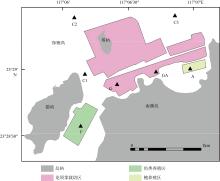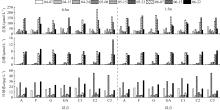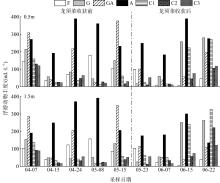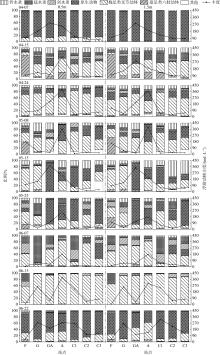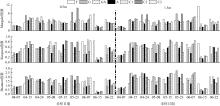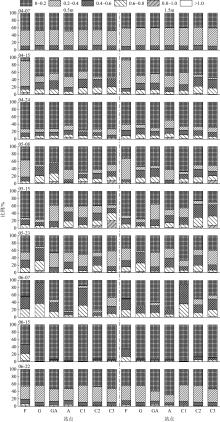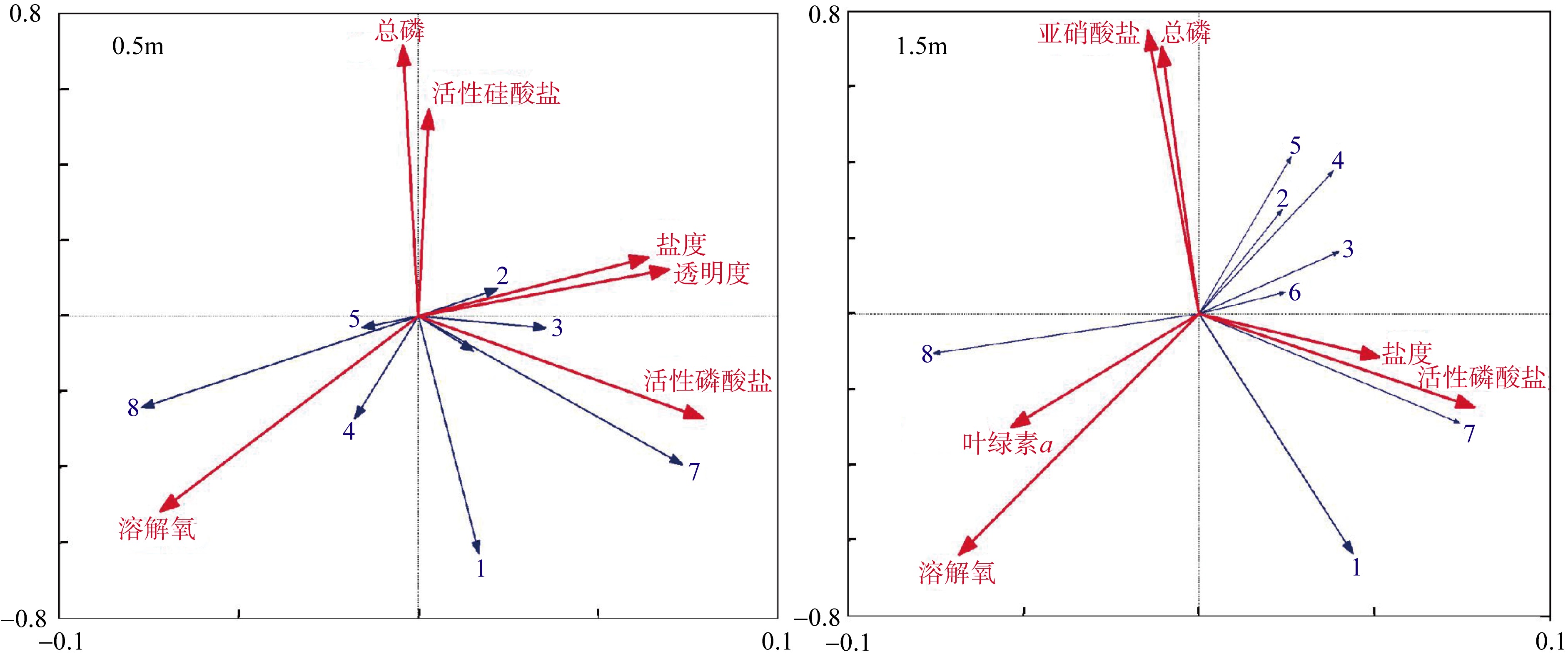| [1] |
陈清潮, 章淑珍, 1965. 黄海和东海的浮游桡足类Ⅰ. 哲水蚤目[J]. 海洋科学集刊, (7): 20-131.
|
|
CHEN QINGCHAO, ZHANG SHUZHEN, 1965. The planktonic copepods of the Yellow Sea and the East Sea Ⅰ. Calanoida[J]. Studia Marina Sinica, (7): 20-131 (in Chinese with English abstract).
|
| [2] |
陈清潮, 章淑珍, 1974a. 南海的浮游桡足类Ⅰ.[J]. 海洋科学集刊, (9): 101-116.
|
|
CHEN QINGCHAO, ZHANG SHUZHEN, 1974a. The pelagic copepods of the South China Sea Ⅰ.[J]. Studia Marina Sinica, (9): 101-116 (in Chinese with English abstract).
|
| [3] |
陈清潮, 沈嘉瑞, 1974b. 南海的浮游桡足类Ⅱ.[J]. 海洋科学集刊, (9): 126-137.
|
|
CHEN QINGCHAO, SHEN CHIA-JUI, 1974b. The pelagic copepods of the South China Sea Ⅱ.[J]. Studia Marina Sinica, (9): 126-137 (in Chinese with English abstract).
|
| [4] |
陈清潮, 章淑珍, 朱长寿, 1974c. 黄海和东海的浮游桡足类Ⅱ. 剑水蚤目和猛水蚤目[J]. 海洋科学集刊, (9): 27-76.
|
|
CHEN QINGCHAO, ZHANG SHUZHEN, ZHU CHANGSHOU, 1974c. On planktonic copepods of the Yellow Sea and the East China Sea Ⅱ. Cyclopoida and Harpacticoida[J]. Studia Marina Sinica, (9): 27-76 (in Chinese with English abstract).
|
| [5] |
邓邦平, 杨宇峰, 2009. 大鹏澳养殖海域微表层与次表层水质及浮游动物群落特征的比较[J]. 暨南大学学报(自然科学与医学版), 30(1): 101-105.
|
|
DENG BANGPING, YANG YUFENG, 2009. Comparative studies on water quality and community structure of zooplankton between the sea surface microlayer and the subsurface microlayer in mariculture areas in Dapeng Cove[J]. Journal of Jinan University (Natural Science), 30(1): 101-105 (in Chinese with English abstract).
|
| [6] |
刘萍, 宋洪军, 张学雷, 等, 2015. 桑沟湾浮游动物群落时空分布及养殖活动对其影响[J]. 海洋科学进展, 33(4): 501-511.
|
|
LIU PING, SONG HONGJUN, ZHANG XUELEI, et al, 2015. Spatio-temporal distributions of zooplankton community and the impact of aquaculture activity on it in the Sanggou Bay[J]. Advances in Marine Science, 33(4): 501-511 (in Chinese with English abstract).
|
| [7] |
柳原, 柯志新, 李开枝, 等, 2024. 人类活动和沿岸流影响下的粤东近海浮游动物群落特征[J]. 热带海洋学报, 43(4): 98-111.
|
|
LIU YUAN, KE ZHIXIN, LI KAIZHI, et al, 2024. Zooplankton community in the coastal waters of eastern Guangdong under the influence of human activities and ocean currents[J]. Journal of Tropical Oceanography, 43(4): 98-111 (in Chinese with English abstract).
|
| [8] |
杜萍, 徐晓群, 徐旭丹, 等, 2017. 象山港三种不同养殖方式对浮游动物群落的影响[J]. 水产学报, 41(11): 1719-1733.
|
|
DU PING, XU XIAOQUN, XU XUDAN, et al, 2017. Effects of three different aquaculture activities on zooplankton community in Xiangshan Bay[J]. Journal of Fisheries of China, 41(11):1719-1733 (in Chinese with English abstract).
|
| [9] |
农业农村部渔业渔政管理局, 全国水产技术推广总站, 中国水产学会, 2022. 2022中国渔业统计年鉴[M]. 北京: 中国农业出版社: 22-23 (in Chinese).
|
| [10] |
任玉正, 柯志新, 谭烨辉, 等, 2020. 广东省南澳岛东部海域浮游动物群落结构及其影响因素[J]. 热带海洋学报, 39(2): 65-76.
doi: 10.11978/2019051
|
|
REN YUZHENG, KE ZHIXIN, TAN YEHUI, et al, 2020. Community structure of zooplankton and its influencing factors in the eastern waters of Nan’ao Island, Guangdong[J]. Journal of Tropical Oceanography, 39(2): 65-76 (in Chinese with English abstract).
doi: 10.11978/2019051
|
| [11] |
苏家齐, 朱长波, 李俊伟, 等, 2019. 流沙湾浮游动物群落特征及与鱼贝养殖的关系[J]. 海洋渔业, 41(3): 278-293.
|
|
SU JIAQI, ZHU CHANGBO, LI JUNWEI, et al, 2019. Characteristics of zooplankton community and their correlation with fish and shellfish aquaculture in the Liusha Bay[J]. Marine Fisheries, 41(3): 278-293 (in Chinese with English abstract).
|
| [12] |
孙鲁峰, 李秀启, 徐兆礼, 2017. 东山湾浮游动物数量特征与养殖活动及水团关系分析[J]. 大连海洋大学学报, 32(4): 465-472.
|
|
SUN LUFENG, LI XIUQI, XU ZHAOLI, 2017. Relationship between quantity characteristics of zooplankton and aquaculture activity and water masses in Dongshan bay[J]. Journal of Dalian Ocean University, 32(4): 465-472 (in Chinese with English abstract).
|
| [13] |
徐淑敏, 齐占会, 史荣君, 等, 2019. 水产养殖对亚热带海湾氮磷营养盐时空分布的影响——以深澳湾为例[J]. 南方水产科学, 15(4): 29-38.
|
|
XU SHUMIN, QI ZHANHUI, SHI RONGJUN, et al, 2019. Influence of mariculure on tempo-spatial distribution of nitrogen and phosphorus in subtropical zone: a case study of Shen'ao Bay[J]. South China Fisheries Science, 15(4): 29-38 (in Chinese with English abstract).
|
| [14] |
曾碧健, 岳晓彩, 黎祖福, 等, 2016. 生态浮床原位修复对海水养殖池塘浮游动物群落结构的影响[J]. 海洋与湖沼, 47(2): 354-359.
|
|
ZENG BIJIAN, YUE XIAOCAI, LI ZUFU, et al, 2016. Effect of ecological floating bed on zooplankton community structure in a mariculture pond[J]. Oceanologia et Limnologia Sinica, 47(2): 354-359 (in Chinese with English abstract).
|
| [15] |
张武昌, 赵楠, 陶振铖, 等, 2010. 中国海浮游桡足类图谱[M]. 北京: 科学出版社.
|
|
ZHANG WUCHANG, ZHAO NAN, TAO ZHENCHENG, et al, 2010. An illustrated guide to marine planktonic copepods in China seas[M]. Beijing: Science Press (in Chinese).
|
| [16] |
BROWN A R, LILLEY M, SHUTLER J, et al, 2020. Assessing risks and mitigating impacts of harmful algal blooms on mariculture and marine fisheries[J]. Reviews in Aquaculture, 12(3): 1663-1688.
|
| [17] |
CHAI ZHAOYANG, HE ZHILI, DENG YUNYAN, et al, 2018. Cultivation of seaweed Gracilaria lemaneiformis enhanced biodiversity in a eukaryotic plankton community as revealed via metagenomic analyses[J]. Molecular Ecology, 27(4): 1081-1093.
|
| [18] |
GAO XIAOLONG, ZHANG MO, LUO XUAN, et al, 2023. Transitions, challenges and trends in China’s abalone culture industry[J]. Reviews in Aquaculture, 15(4): 1274-1293.
|
| [19] |
LI HONGMEI, LI XIAOMIN, LI QING, et al, 2017. Environmental response to long-term mariculture activities in the Weihai coastal area, China[J]. Science of The Total Environment, 601-602: 22-31.
|
| [20] |
LI XIAOYU, YU RENCHENG, GENG HUIXIA, et al, 2021. Increasing dominance of dinoflagellate red tides in the coastal waters of Yellow Sea, China[J]. Marine Pollution Bulletin, 168: 112439.
|
| [21] |
MACK H R, CONROY J D, BLOCKSOM K A, et al, 2012. A comparative analysis of zooplankton field collection and sample enumeration methods[J]. Limnology and Oceanography: Methods, 10(1): 41-53.
|
| [22] |
NDAH A B, MEUNIER C L, KIRSTEIN I V, et al, 2022. A systematic study of zooplankton-based indices of marine ecological change and water quality: application to the European marine strategy framework Directive (MSFD)[J]. Ecological Indicators, 135: 108587.
|
| [23] |
PAKHOMOV E, KAEHLER S, MCQUAID C, 2002. Zooplankton community structure in the kelp beds of the sub-Antarctic Prince Edward Archipelago: are they a refuge for larval stages?[J]. Polar Biology, 25(10): 778-788.
|
| [24] |
RATNARAJAH L, ABU-ALHAIJA R, ATKINSON A, et al, 2023. Monitoring and modelling marine zooplankton in a changing climate[J]. Nature Communications, 14(1): 564.
doi: 10.1038/s41467-023-36241-5
pmid: 36732509
|
| [25] |
STEINBERG D K, LANDRY M R, 2017. Zooplankton and the ocean carbon cycle[J]. Annual Review of Marine Science, 9: 413-444.
doi: 10.1146/annurev-marine-010814-015924
pmid: 27814033
|
| [26] |
WANG QING, REN HUI, YANG YUFENG, 2021. Ecological studies of colonized invertebrate communities on cultivated seaweeds in a typical mariculture zone, China[J]. Marine Ecology, 42(6): e12681.
|
| [27] |
XIANG CHENHUI, KE ZHIXIN, LI KAIZHI, et al, 2021. Effects of terrestrial inputs and seawater intrusion on zooplankton community structure in Daya Bay, South China Sea[J]. Marine Pollution Bulletin, 167: 112331.
|
 ), REN Hui1, KE Zhixin2
), REN Hui1, KE Zhixin2


